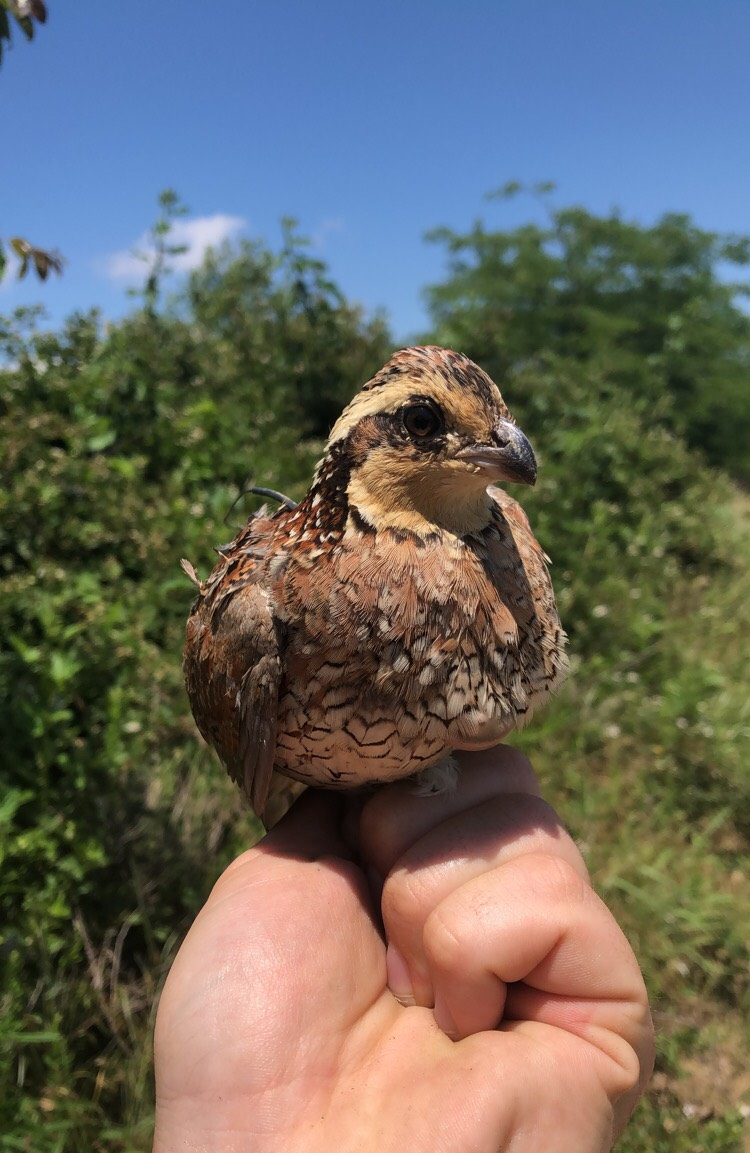
Photo courtesy of the Illinois Department of Natural Resources.



Photo courtesy of the Illinois Department of Natural Resources.
The charismatic “bob-white” whistle of a male bobwhite used to be a tell-tale sign of spring in southern Illinois, but their numbers have been declining to the point where some people may only remember hearing them in “the good ol’ days.”

Northern bobwhite (Colinus virginianus) populations have continued to experience steady declines since the 1930s. The bobwhite is a popular game bird throughout its range of the southeastern United States, and bobwhites are one of the most studied and intensely managed game bird species in the United States. Yet, across their range bobwhites have experienced declines of 4.2 percent per year. In Illinois specifically, bobwhites have been declining at a rate of 3.3 percent per year based on the North American Breeding Bird Survey. Why are bobwhite populations so imperiled? Habitat loss, degradation and fragmentation across the landscape are commonly accepted as the factors causing the observed declines in bobwhite populations. In Illinois, changes in land use due to more intensive agricultural practices have reduced the amount of bobwhite habitat across the landscape.
As a result of bobwhites’ decline, Illinois has joined the National Bobwhite Conservation Initiative (NBCI) to increase the amount of useable habitat for bobwhites in southern Illinois. The Illinois Department of Natural Resources (IDNR) has designated Burning Star State Fish and Wildlife Area (northeast Jackson County) as the first Quail Focal Area in the state, joining 24 other states in a unified effort for bobwhite conservation. IDNR has enlisted the help of researchers at Southern Illinois University who will study how bobwhite populations respond to active quail management and grassland restoration.

The main goal of the Focal Area at Burning Star State Fish and Wildlife Area is to show that quail populations will respond to the right management actions on large blocks of habitat. Researchers will document the status of quail on the site as well as the habitat conditions before management begins. The, managers will selectively restore land that is being farmed, enhance existing grasslands and implement management practices that increase habitat quality and quantity for bobwhites inhabiting the site. Researchers will then monitor the quail response to the changes in land use and management to help highlight what works to produce more quail on the site. Spring whistling male call counts, fall covey call counts, habitat monitoring, and habitat management data are all collected to monitor the bobwhite population and habitat changes in response to the planned quail management and habitat restoration proposed for the site.
Additionally, researchers will study the movements, habitat selection, home range, nest success and survival of bobwhites by attaching radio-transmitters to wild caught bobwhites. Radio-transmitters allow researchers to observe what a day in the life of a bobwhite is like from where they roost to where they feed and loaf. The data currently being collected at Burning Star State Fish and Wildlife Area will be used to establish baseline data as a reference to estimate the influence of quail management and grassland habitat restoration across this multi-year study. Studying how quail management and restoration efforts influence bobwhite populations on this site will help provide insight into the best management actions to promote bobwhite population growth on other state sites and on private lands across Illinois.
An additional bonus realized on Focal Areas in Kentucky and Missouri has been an increase in wild turkey and deer harvest on their Focal Areas. The management practices implemented for quail also provide big benefits to other populations of game species.

Bobwhites are not the only species dependent on grassland habitats. Other grassland dependent songbirds have experienced the same decline in numbers as bobwhites. Numerous grassland/shrubland songbird species can be observed at Burning Star State Fish and Wildlife Area, including dickcissel, field sparrow, eastern kingbird, common yellowthroat, indigo bunting, yellow-breasted chat, eastern towhee and brown thrasher. Bobwhite focused management and restorations are bound to have positive influences on other grassland songbird populations as well. Our research will gauge the response of the entire grassland community in response to bobwhite management and provide useful information into how management for a single game bird species can possibly benefit a grassland community.
Research investigating the possible management and restoration activities for bobwhites and how it benefits other grassland bird species is a step towards preventing future declines in grassland bird populations. We hope to not only identify the best techniques to improve grassland habitat for bobwhites and other grassland bird populations but provide useful information on how to manage habitat to help save grassland birds across Illinois.
Caleb Crawford is a graduate research assistant in the Cooperative Wildlife Research Laboratory at Southern Illinois University advised by Michael Eichholz. He obtained an undergraduate degree in Zoology from Southern Illinois University in 2018.
Michael Eichholz is a waterfowl/wetland ecologist in the Cooperative Wildlife Research Laboratory (CWRL) and a Professor in the School of Biological Sciences at SIU. He earned his Ph.D. at the University of Alaska – Fairbanks.
Submit a question for the author